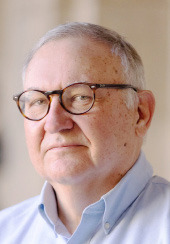All Things N ebraska
As I sit down to write this column, my tomatoes have finally met with a hard freeze and the cannas we plant in the local park are giving up their red-topped glory.
It was one, long fall in my section of southeast Nebraska, with lots of warm days and only recently, a couple of cold snaps. After a killing frost finally arrived here, temperatures in mid-November again rebounded into the 60s and lower 70s. It all makes you wonder: what is going on? The recent update of the State Climate Assessment gave us some idea. The Assessment, funded by the Nebraska Legislature and compiled by 20-some climate experts, confirms that the state has gotten warmer, particularly in the fall, and that extreme weather events, like the record-worst wildfires of 2012, the bomb cyclone floods of 2019, and the damaging 90 mph winds that hit eastern Nebraska in August, are becoming more frequent and more devastating.
Checked the price of your homeowners or farm insurance? The average cost of homeowners insurance in Nebraska has more than doubled during the past decade. That’s the biggest increase in the nation.
“Nebraska stands at a crossroads of experiencing and addressing the challenges climate change brings,” begins the 312-page state climate report, which was issued in September by the University of Nebraska-Lincoln.
Now, I enjoy a warm afternoon like the next guy, and there’s a lot of outdoor painting and golf that can be done into November with this kind of weather, but the climate report included some warnings: – higher temperatures, longer growing seasons and more intense droughts will put stress on the state’s water resources.
– a hotter climate might mean farmers will have to shift to more resilient crops and livestock producers might need to look at species better adapted to warmer weather.
How much warmer might it get? The report predicts that Nebraska’s climate is destined to be more like Oklahoma’s by 2050, with average temperatures 5 to 6 degrees higher compared to 1951-2014.
The number of hot days, with temperatures of 90 and hotter, will increase two to four times, the report stated, while extremely warm nights of 70 degrees or more could be 10 times more frequent.
Time to check the air conditioning, eh? Climate change is a touchy subject. But the climatologists and others who put together the plan say there’s no doubt that the climate is changing, and changing more rapidly than can be attributed to natural changes.
“Reputable climate scientists worldwide continue to be in near unanimous agreement (greater than 99%) that human influences have warmed the atmosphere, oceans and land,” the state report stated.
The report also includes some “options and opportunities” to address climate change. Things like better management of groundwater pumping and recharge, and using more regenerative agriculture techniques to better conserve water. Planting more native landscape grasses and plants that require less irrigation. And better preparation to mitigate flooding, and conservation of water to carry though droughts.
And there was a controversial suggestion – utilize more renewable energy sources, like solar and wind, and less fossil fuels to reduce carbon emissions and slow warming.
One of the state’s leading landowners, Bill Gates, who owns several Nebraska farms, recently stated that climate change won’t destroy civilization.
But he says it still is a very big problem that will have serious consequences, particularly in poor countries and areas that aren’t preparing for it.
The new state climate plan said much the same.
Paul Hammel has covered the Nebraska state government and the state for decades. Prior to his retirement, he was senior contributor with the Nebraska Examiner. He was previously with the Omaha World-Herald, Lincoln Journal Star and Omaha Sun. A native of Ralston, Nebraska, he loves traveling and writing about the state.

.jpg)








